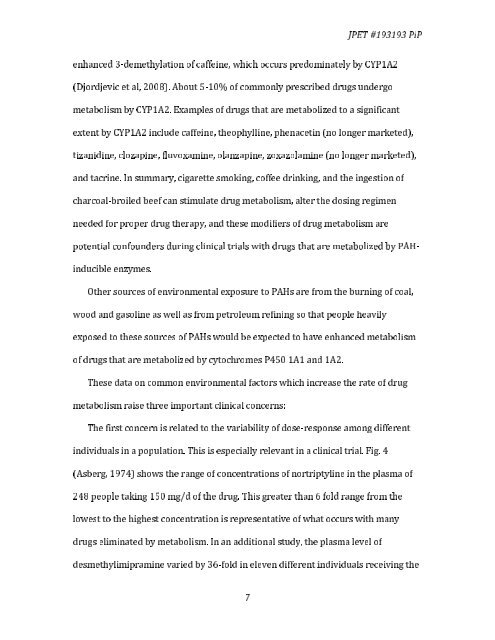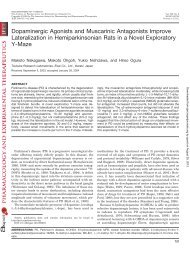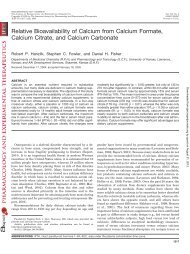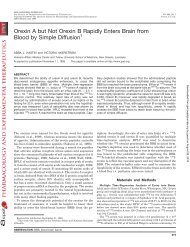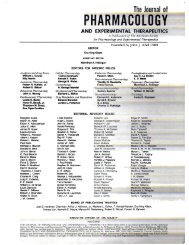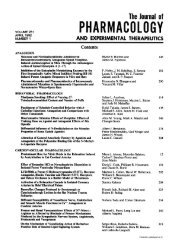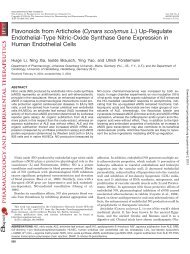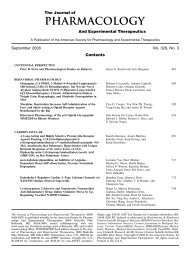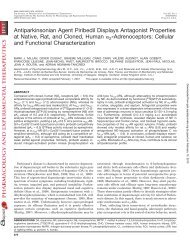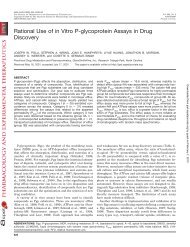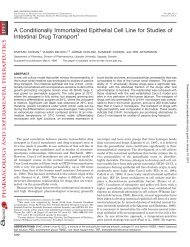Title Page Cigarette Smoking, Coffee Drinking, and Ingestion of ...
Title Page Cigarette Smoking, Coffee Drinking, and Ingestion of ...
Title Page Cigarette Smoking, Coffee Drinking, and Ingestion of ...
You also want an ePaper? Increase the reach of your titles
YUMPU automatically turns print PDFs into web optimized ePapers that Google loves.
7<br />
JPET #193193 PiP<br />
enhanced 3-demethylation <strong>of</strong> caffeine, which occurs predominately by CYP1A2<br />
(Djordjevic et al, 2008). About 5-10% <strong>of</strong> commonly prescribed drugs undergo<br />
metabolism by CYP1A2. Examples <strong>of</strong> drugs that are metabolized to a significant<br />
extent by CYP1A2 include caffeine, theophylline, phenacetin (no longer marketed),<br />
tizanidine, clozapine, fluvoxamine, olanzapine, zoxazolamine (no longer marketed),<br />
<strong>and</strong> tacrine. In summary, cigarette smoking, c<strong>of</strong>fee drinking, <strong>and</strong> the ingestion <strong>of</strong><br />
charcoal-broiled beef can stimulate drug metabolism, alter the dosing regimen<br />
needed for proper drug therapy, <strong>and</strong> these modifiers <strong>of</strong> drug metabolism are<br />
potential confounders during clinical trials with drugs that are metabolized by PAH-<br />
inducible enzymes.<br />
Other sources <strong>of</strong> environmental exposure to PAHs are from the burning <strong>of</strong> coal,<br />
wood <strong>and</strong> gasoline as well as from petroleum refining so that people heavily<br />
exposed to these sources <strong>of</strong> PAHs would be expected to have enhanced metabolism<br />
<strong>of</strong> drugs that are metabolized by cytochromes P450 1A1 <strong>and</strong> 1A2.<br />
These data on common environmental factors which increase the rate <strong>of</strong> drug<br />
metabolism raise three important clinical concerns:<br />
The first concern is related to the variability <strong>of</strong> dose-response among different<br />
individuals in a population. This is especially relevant in a clinical trial. Fig. 4<br />
(Asberg, 1974) shows the range <strong>of</strong> concentrations <strong>of</strong> nortriptyline in the plasma <strong>of</strong><br />
248 people taking 150 mg/d <strong>of</strong> the drug. This greater than 6 fold range from the<br />
lowest to the highest concentration is representative <strong>of</strong> what occurs with many<br />
drugs eliminated by metabolism. In an additional study, the plasma level <strong>of</strong><br />
desmethylimipramine varied by 36-fold in eleven different individuals receiving the


